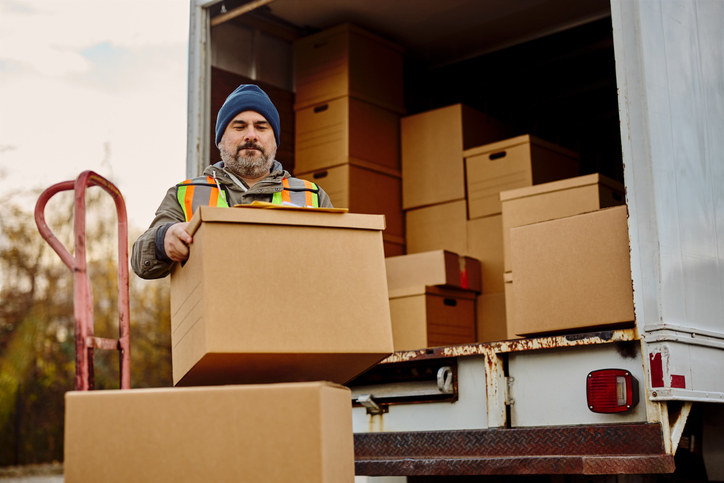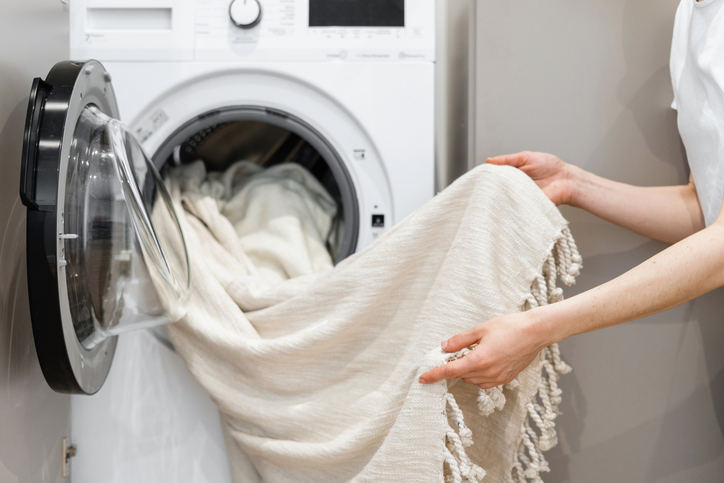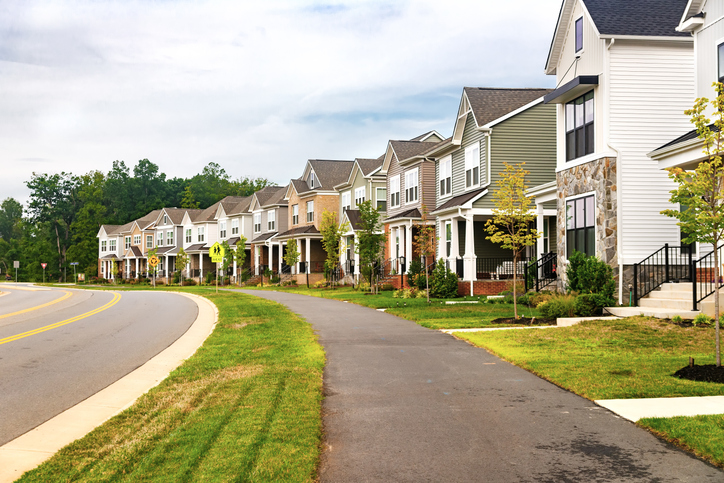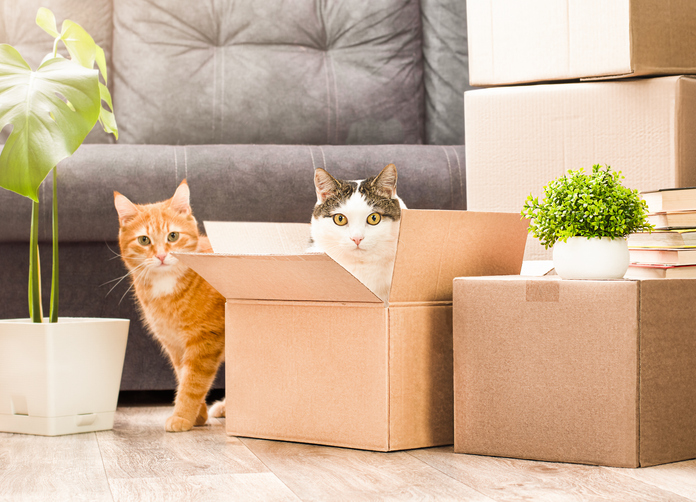
What to Expect as a First-Time Renter
So, you’re thinking of making the jump to renting a place? Congratulations! You’ve got the perfect apartment in mind, intense home décor and DIY plans, and—not so fast. There are some things you need to know before signing that dotted line on a lease. Here are the things you need to know before you move in, during, and afterward.

BEFORE YOU MOVE IN
There are several things you should think about—and do—before starting your search for a rental property.
Create a budget
Yup, this comes first! According to the Government of Canada, your rent and any household expenses should not cost more than 35% of your gross monthly income. This will help you visualize how much you have to work with for rent, groceries, furniture, utilities, and other fees that come with renting. There are other potential expenses that come with moving into your first place, like moving expenses or needing to buy furniture if you’re searching for unfurnished homes. Having a roommate is a great option to cut costs, too!

Needs and wants
Next, once you know your budget, you can determine your needs and wants. What are your must-haves? Maybe it’s things like a dishwasher or air conditioning. Or what are some things you’re willing to compromise on to cut costs, like having in-suite laundry or a yard? Being realistic with your budget or the availability of these offerings in your area can help determine how quickly you are able to find a place.

Schedule an in-person tour
While virtual tours are great if you live far away from your desired new location, in-person tours are the best way to get a look and feel of a potential rental unit for yourself. You can hear and smell things that can’t be captured on video, ensure no nooks or crannies are missed, and overall, just see things for yourself. No fancy furniture staging, no filters, and no pictures from 15 years ago. A tour is the best time to prepare any questions you may have about the property. Here’s a list of questions we suggest asking:
- “How much is the rent, and what does this all include?” This narrows down which utilities are up to you to cover.
- “Are there any additional fees?” If the building is equipped with any recreational features, they may require additional monthly payments to use them. In addition, there could be a cost for pets, extra parking spots, lawn care, snow removal, and more.
- “What are the lease length options?” Some places prefer month-to-month leases, while others have a mandatory minimum of one year. Make sure this aligns with your plans, too!
- “What are my payment options?” This is important. How you must pay your rent may be convenient or inconvenient for you. Discuss payment plans and methods with your landlord or property manager.
- “What are the security measures of the building/unit?” The landlord or property management company may inform you that there is a doorbell camera, other security cameras, locked doors, or, in some cases, security staff on premises after-hours. If the owner cares for your well-being, this is not something to be disregarded.

While you’re on the tour, here’s a checklist of things to make note of:
- Noise. Is there anything in the house or building making noise? Is it your potential neighbours, a nearby screechy elevator, or mechanical room sounds? If it’s nothing that’ll keep you up at night, this is a green flag.
- Test out all the light switches and door locks for safety purposes.
- Verify where outlets are located and if they look to be in a safe condition.
- Are there smoke alarms or carbon monoxide detectors in your suite? Make sure they are in working condition, especially if there are gas-powered appliances.
- Outdoor trash and recycle bins, where are these located?
- Is there a fire extinguisher?
- Flights of stairs or elevator? Buildings of three floors or less do not have to be equipped with an elevator, so if you’re in this boat, decide if it’s a deal-breaker.
- If you drive a car, what is the parking situation like? Is it on- or off-street parking? Will you receive a reserved spot, or is it rushed parking? Is the parking electrified during winter?
Reviews
When it comes to online reviews, this only pertains to property management companies and building complexes. Take some time to check out the reviews of the rental property you’re interested in living in. Are there any recent ones that may pose a red flag and deter you from applying?
Area & Neighbourhood
Before moving in, it doesn’t hurt to familiarize yourself with the area of interest. Can you locate the nearest grocery store, school for your kids, or bus stop? These might be amenities that are important to you. Don’t compromise on your safety; make sure going everywhere at night feels just as comfortable and accessible as it does in the daytime.

APPLYING
Ready to fill out an application? Sometimes, there are application fees, so be sure to only complete an application for properties you are genuinely interested in.
Here are some things they may ask for as part of your application:
- Copies of your 2-3 most recent pay stubs. This is so they have evidence of your monthly earnings.
- A few rental references. This can be previous landlords, but since you might be a first-time renter, you can provide some business references.
- Proof of identity: They may ask to scan a piece of photo ID for their records, or they’ll ask you for a copy.
- Personal information: Where you work, where you currently live, your birthday, your full legal name, and more.
Lastly, they’ll perform a check on your overall credit score. To lower the risk for them as a property owner, they aim to select applicants who have good credit scores.
MOVING IN
The first thing you’re going to have to do after your application is accepted is to sign a lease, put down a damage deposit, and set the effective date for your tenant insurance policy. Here’s what you need to know!

Lease
A lease is your rental agreement in print. Your lease outlines:
- How and when do you pay rent each month.
- The cost of your rent each month and other fees like for pets, parking, laundry facilities, recreational amenities, and more.
- Your move-in date and the date your lease ends. The last day of your lease would be your move-out date, unless you choose to renew and continue living there.
- Maintenance and repair expectations, and utilities that are to be covered by the tenant or by the landlord.
- Security deposit, amount, and the conditions that need to be met for it to be returned upon move-out or termination of the lease.
- Legal fees—outlining who will cover them if there’s a dispute about the lease or rental terms.
- When and how the landlord or property management company can enter the property.
- Use of the property. This is the part where they will state how many people are permitted to live in the rental, rules on subletting, prohibited activities, and policies. A policy could be something like outlining quiet hours in the complex.
- Termination or eviction. The not-so-fun part, but fine print that’s worth a glance over! A lease will include the conditions under which the lease can be terminated early by either party, or what the process for eviction looks like.
It’s important to sign that lease because this is your golden handbook in case things take a turn for the worse.
Tenant Insurance
Now that you know your move-in date, you’ll want your tenant insurance coverage to start that day, too. While some landlords may not require proof of tenant insurance, also known as renter’s insurance, that extra $20 a month could save you in the long run. Think of it like a subscription service to your favourite binge-watching platform; it’s not something you want to compromise on for your livelihood.
Tenant Insurance with Sandbox in Saskatchewan, Manitoba, and Alberta protects your personal property, any upgrades you’ve made to your rental, and additional living expenses. There are even multiple deductible options, giving you choices for when things take a turn for the worse.

And yes—it includes tenant liability coverage in case you accidentally damage the unit or cause injury to someone while on the premises.
For broader protection, Sandbox offers property insurance encompassing home, condo, cabin & cottage, and landlord insurance for more peace of mind. Speaking of protection, this is the perfect time to ask your broker for a quote so you can compare options before you commit.
Damage Deposit
Also known as a security deposit, a damage deposit is required by landlords and property management companies before you move in. A damage deposit is usually equivalent to one month’s rent. Typically, this deposit is accepted the day you sign your lease or the day you move in.
So, how can you make sure you get your damage deposit back if you move out?
Well, the simple answer to this is, don’t cause any damage to the property. You want to be sure you document all the damage that there may already be in the home before you move in. So, take photos and videos prior to or on the day you move in. Look for scratches in the floors and walls, any signs of water damage, mould, or pests, stains on the carpets, and more. Save these photos and videos in a safe place so that you can provide them on move-out if you need to.
GETTING SETTLED
Moved in, or in the works of it? Check out “How to Move Homes Without Losing Your Mind (or Your Stuff!). And last of all? Decorating and furnishings! Check out our rental-friendly decorating tips for some inspiration.

And that’s it! You’re ready to dive into first-time renting without (too many) surprises. Plan ahead, ask the right questions, protect your stuff with tenant insurance, and make your new place feel like home.
Do things to make your new space feel like you, and take some time to take it all in. Welcome home—you’ve got this!
